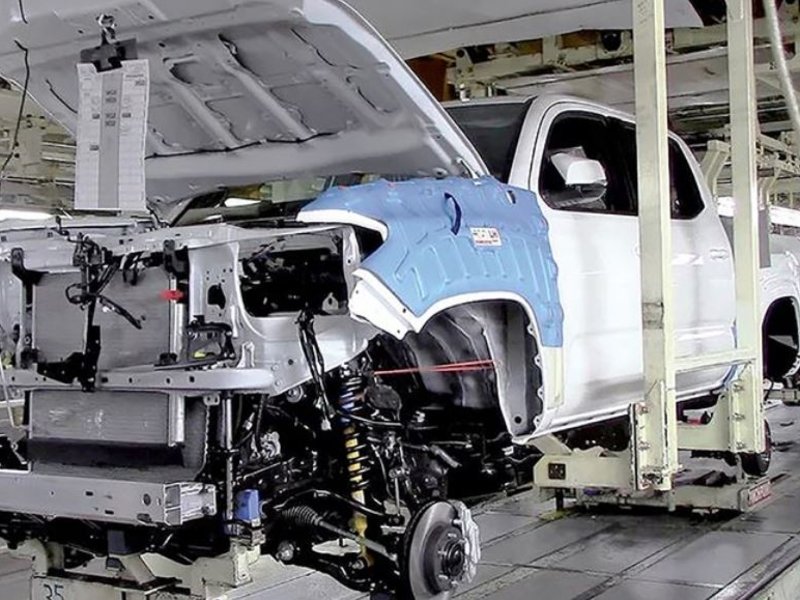
PRINCETON, Ind. — Toyota will reallocate vehicles to different North American factories next year in a bid to make production lines and supply chains more efficient, the automaker said here Friday.
The initiative reflects Toyota’s step-by-step move away from plans that were enacted in the dire days of the Great Recession when it needed to keep plants operating and avoid layoffs.
With the new plan, Toyota is taking the gloves off to produce vehicles in pockets of manufacturing efficiency.
The company will move the Sequoia large SUV from a Princeton, Ind., factory to a San Antonio plant, where production will start in 2022. That decision will put both of Toyota’s full-size body-on-frame products — the Sequoia and the Tundra pickup — in the same plant with a shared supply base.
Toyota will simultaneously move Tacoma midsize pickup output from San Antonio and combine it with Tacoma production at a plant in Guanajuato, Mexico.
That shift will give San Antonio more capacity to churn out additional Tundras.
The Indiana plant will then devote freed-up capacity and resources to build the Highlander large crossover and Sienna minivan.
Over the past decade, Toyota kept some vehicles in production where they helped sustain factory utilization rather than where they made the most sense for optimal productivity and manufacturing efficiency.
The Tacoma, for example, was added to the San Antonio plant in 2010 during a period of surging small car popularity and falling truck demand, when it became apparent that sales of the full-size Tundra were not enough to support the Texas plant.
The upcoming moves are part of major manufacturing investments that Toyota is undertaking in North America.
The company is midway through a five-year plan to spend $13 billion through 2021 on revitalizing and expanding its U.S., Canadian and Mexican plants and building new capacity.
Toyota and Mazda Motor Corp. are building a $1.6 billion joint-venture assembly plant in Huntsville, Ala., that will come online in 2021.
On Friday in Princeton, Toyota showed visitors a plant that underwent a $700 million refurbishing to build the redesigned Highlander. That expense does not cover whatever future costs arise from easing the Sequoia out of the plant next year.
The $13 billion capital program still has $5.9 billion that is not assigned — enough to build four or five new assembly plants, if the company chose to do so.
But Toyota’s U.S. outlook is remarkably more bullish today than it was a decade ago, when the Japanese giant was stunned to suddenly find itself with too many American workers and too many American factories — anathema to a company that trains its personnel to identify and eliminate muda, or waste, at every turn.
That moment caught Toyota with a partially constructed vehicle assembly plant near Tupelo, Miss., that it decided it did not need after all. It later completed that plant.
Today, Toyota said it needs additional North American capacity and workers.
Despite its plan to carve the Sequoia out of Indiana and send it to San Antonio, Toyota still needed to hire 150 workers at the Princeton plant to keep up with forecasts for the Highlander. That was on top of 400 additional workers it hired there in 2017.